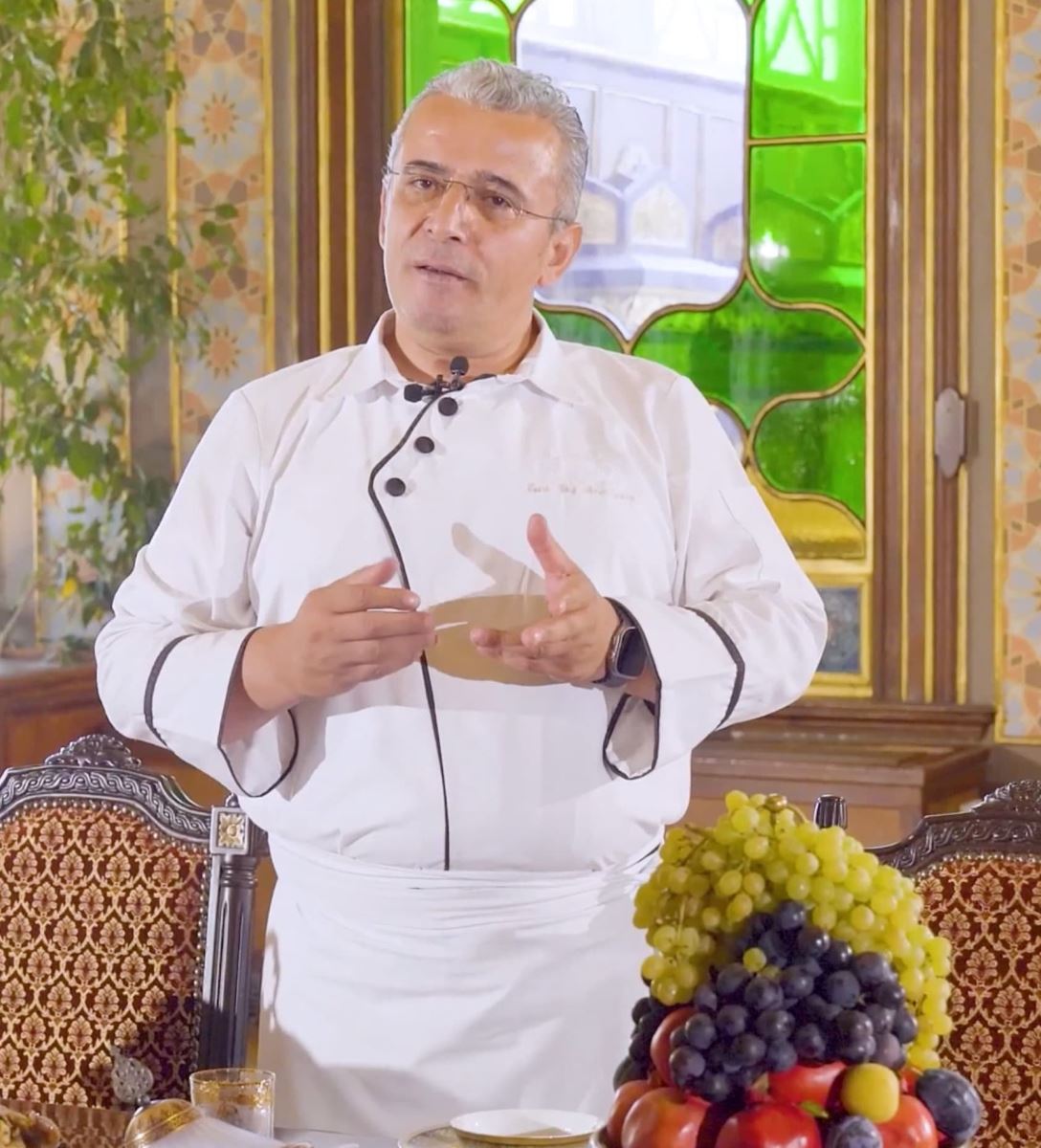 * What are the 2026 World Culinary (Kitchen) Trends?
* What are the 2026 World Culinary (Kitchen) Trends?
* Smart Kitchen Technologies: From Robotic Assistants to Artificial Intelligence-Powered Menu Management
* Biodiversity-Based Recipes: The Rise of Native Seeds and Regional Ingredients
* The New Face of Global Fusion: Micro-Fusion and Cultural Sensitivity
* Climate-Friendly Kitchens: Low-Carbon and Waste-Free Cooking Systems
* Expanding Sensory Experiences: New Dimensions of Sound, Smell, and Visual Presentation
As we enter 2026, world cuisines are being redefined not only by palate but also by sustainable restaurant cuisine , cultural diversity, and advanced technology. A plate is no longer just about flavor; it's about the future of the planet, the preservation of cultural heritage, and individual health, all of which are simultaneously dynamics. New consumer expectations, a planet-friendly production approach, and global gastronomic diplomacy, which emerged after the pandemic and are prioritized in my Restaurant Consultancy , are causing cuisines to evolve formally and philosophically. This transformation isn't limited to restaurants in major cities in the 2026 World Culinary Trends ; it's making its presence felt in every corner of the world, from rural areas to metropolises, from Asia to Europe. In this article, Chef Ahmet Özdemir, at Örnek Restaurants , analyzes in detail five global culinary trends expected to dominate 2026 and invites you to explore the evolving gastronomic landscape together.
** Smart Kitchen Technologies: From Robotic Assistants to AI-Powered Menu Management
By 2026, the pace of digitalization in kitchens worldwide has accelerated. While traditional chef skills remain highly valued, as I mentioned in my article " 2026 World Gastronomy and Tourism Trends," these skills are now being integrated with AI-powered software, robotic arms, and data-driven systems. Systems that optimize temperature and time control have become standard in restaurant kitchens, particularly in technology-leading countries like the United States, South Korea, and Japan, which I consider in my restaurant concept consulting . Furthermore, cooking equipment equipped with smart sensors reduces food waste and increases energy efficiency.
While sustainability-focused kitchen technologies are at the forefront in Europe, automation aims to preserve traditional flavors in the Middle East and Asia. This shift allows kitchen staff to think more strategically, while also increasing time and labor efficiency. In gastronomy, menu planning and algorithms recommend content based on customer preferences during menu analysis , automatically highlighting, for example, recipes that are vegan, gluten-free, lactose-free, or have a low carbon footprint.
These technologies are beginning to be implemented not only in large chains but also in a wide range of areas, from fine dining restaurants to street food. In Turkey, these systems are gradually being integrated into restaurant kitchens in major cities like Istanbul, Izmir, and Ankara. This transformation should be seen not only as a technological investment, but also as the beginning of a new approach that enhances efficiency, hygiene, and guest satisfaction .
**Biodiversity-Based Recipes: The Rise of Native Seeds and Regional Ingredients
Food cultures no longer serve merely palate but also, as in the Ottoman Palace Cuisine, serve the sustainability of the planet. By 2026, global cuisine will undergo a major transformation toward indigenous seeds, regional agricultural products, and traditional production techniques. While the uniqueness of local cuisines is particularly prominent in regions like Latin America, Africa, and Southeast Asia, in Europe, gastronomy is equated with preserving agricultural diversity.
This trend, developing against the industrialization of food systems, also forms the basis of healthy and ethical eating. In Turkey, products derived from heirloom seeds like einkorn wheat, black string rice, and purple carrots began to be frequently used both in my restaurant menu work and in the larger scale kitchens and kitchen management I later learned about . Similarly, in India, millennia-old spice recipes and in Scandinavian countries, herbs gathered from the wild became an integral part of culinary identities.
This transformation, which I consider in my menu consulting , is not only a taste preference but also a social message in the menus I create. These steps, taken to increase food security, combat climate change, and preserve cultural heritage, are resonating widely within the global chef community. Recipes based on biodiversity, particularly in Mediterranean cuisine , contribute to both a deeper connection with consumers and the revitalization of local economies.
** The New Face of Global Fusion: Micro-Fusion and Cultural Sensitivity
Classic fusion cuisine has reached a much more sophisticated level by 2026. A new approach, called "micro-fusion," is now based on the elegant harmony of small cultural details. For example, the Japanese kaiseki tradition and the South American ceviche style can be delicately blended in the same dish. This approach prioritizes not only flavor integrity but also cultural representation. Global chefs now operate on the principle of "cultural respect," considering any culinary tradition not only in terms of taste but also in its historical context in their professional restaurant management and management.
While Mexican-Korean fusion restaurants are on the rise in the US, examples blending Arab-French cuisine are gaining prominence in Europe. In Turkey, creative dishes combining Ottoman cuisine with Far Eastern influences are gaining traction. This micro-fusion movement has become one of the most elegant ways to bridge the gap between cuisines, fostering guest loyalty . It also strengthens the storytelling element within the menu.
In the restaurant industry , particularly in cities where culinary tourism is on the rise , these micro-fusion examples offer guests not only a taste of food but also a cultural exploration. This trend is driven by multi-layered culinary knowledge, research, and cultural empathy. It has become the norm for chefs to receive more ethnic culinary training and travel to experience these cultures.
** Climate-Friendly Kitchens: Low-Carbon and Waste-Free Cooking Systems
The year 2026 is considered a turning point for restaurants to take responsibility in the fight against climate change. Kitchens that reduce their carbon footprint have become not only ethical but also a commercial imperative. Restaurant chains, individual businesses, and local culinary initiatives are standing out with their Waste-Free Sustainable Kitchens , sustainable energy sources, smart Food Waste Management , and environmentally friendly packaging solutions.
Across the world, the practice of issuing "carbon certificates" to restaurants is becoming more widespread in countries like Sweden, Denmark, Canada, and New Zealand. Some restaurants in Turkey, pioneering this approach, have redesigned both their cooking processes and ingredient sourcing, a priority for me as a culinary consultant . Menu design considers water consumption, logistics, and energy efficiency, not just for plant-based menus, but even for recipes that include meat.
Additionally, zero-waste kitchen practices have become a part of restaurant training programs under the Concept Types and Features . Using vegetable stems in sauces, bones in bouillon, and creatively utilizing all ingredients are now criteria for mastery. This awareness among kitchen staff both reduces costs and increases environmental responsibility.
** Expanding Sensory Experiences: New Dimensions of Sound, Smell, and Visual Presentation
In 2026, the dining experience will become more meaningful not just through taste, but through the holistic harmony of all five senses. This new approach, which I also implement in my restaurant training consultancy, is a growing trend worldwide, particularly in fine dining restaurants. Now, experiencing a meal is supported by audio ambiances, special scent diffusers, and augmented reality plate presentations.
The temperature, aroma, color, and texture of food, as well as the ambiance, the sound of clinking cutlery, table setting, and even the rhythm of service, are now among the factors that determine gastronomic quality. This comprehensive sensory design also allows brands to create a unique identity. This ensures customer loyalty isn't just about taste, but also about a holistic atmosphere.
Conclusion
2026 will mark a period in which kitchens, taking into account restaurant technologies , cease to be mere cooking spaces and become a meeting point for cultural, technological, and environmental values, including steak cooking techniques . Gastronomy is no longer simply a culinary journey; it also offers a multilayered experience intertwined with responsibility, awareness, creativity, and technology. This broad spectrum, from vegan cuisine to robot chefs, from local products to digital menus, presents new opportunities and challenges for both professional kitchens and home users in terms of gastronationalism . Traditional Turkish cuisine is being repositioned as both an influencer and a recipient of this global wave of change. As Chef Ahmet Özdemir, I believe that kitchens that can accurately interpret culinary trends, renew themselves according to the zeitgeist, and maintain their authenticity will play a leading role in the gastronomic scene of the future.
Chief Ahmet ÖZDEMİR
International and Intercontinental
Restaurant Consultant and Kitchen Consultant
Ottoman and Turkish Cuisine World Ambassador
Notes:
Important Note:
You can check out my latest project, Elysium LAGOS, in Lagos, which I coordinated from construction to the grand opening. You might also be interested in seeing the fine dining menus, garden restaurant menus, bistro restaurant menus, and tasting menus within the Lagos Elysium group .
Important note:
*** You can also review my occasional professional articles on gastronomy and tourism trends . You can also visit my official English website, where I provide international and intercontinental restaurant and culinary consulting services , by clicking the image below .
* What are the most prominent kitchen trends in 2026?
* What innovative practices will stand out in fine dining restaurants in 2026?
* What is sustainable restaurant cuisine and how will it be implemented in 2026?
* How will 2026 kitchen technologies affect gastronomy?
* What does gastronationalism mean and why is it so important in 2026?
* Where are vegan and plant-based cuisine trends heading in 2026?
* How will Turkish cuisine shape global gastronomy trends in 2026?
* How is molecular cuisine transforming fine dining concepts in 2026?
* In what direction are restaurant concept types evolving in 2026?
* How will guest satisfaction and loyalty be achieved in 2026?
* Why is Mediterranean cuisine prominent in 2026 gastronomy trends?
* What do 2026 kitchen consultancy services focus on?
* How will hygiene standards and technological advancements affect restaurants in 2026?
* Which cultures will fusion cuisine merge with in 2026?
* How are the culinary cultures that have a place in the world's memory preserved in 2026?
* What are the energy-saving kitchen technologies for restaurants in 2026?
* How do exemplary restaurants adapt to 2026 culinary trends?
You can get SUPPORT from me on topics related to restaurant and kitchen concept types in the field of international cuisines, including preparation, analysis and design of sample restaurant menus in the kitchens specified below, or one-on-one vocational training practical services that your business needs from A to Z...
*** Vegan and Vegetarian Cuisine in Gastronomy ,
*** Asian and Arabic Cuisine Concept,
*** Those who want to study about Russian Cuisine , one of the famous cuisines ,
*** Those who want to have a menu prepared about Italian Cuisine , one of the known world cuisines ,


2026 global culinary trends, smart kitchen technologies, robot chefs, AI-supported menu management, biodiversity-based recipes, local seeds, micro-fusion, cultural sensitivity, climate-friendly kitchens, low-carbon cooking, waste-free cuisine, sensory experience, gastronomic diplomacy, sustainable restaurant cuisine, guest satisfaction, vegan cuisine, gastronationalism, Turkish cuisine, Ottoman palace cuisine, fine dining, molecular cuisine, restaurant concept types, menu analysis, cooking techniques, Mediterranean cuisine, model restaurants, menu management, hygiene standards, gastronomic tourism, culinary consulting...